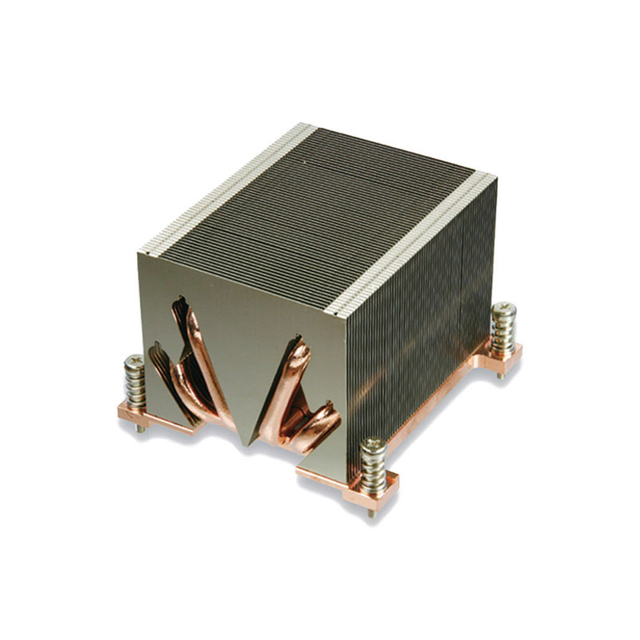Views: 83 Author: Site Editor Publish Time: 2023-07-21 Origin: Site


Have you ever wondered how the fin designs of custom radiators impact their performance? Are you curious about the various options available in the market? In this blog post, we will delve into the world of fin designs for custom radiators and explore their significance in cooling applications. Let's uncover the secrets behind these intricate designs and understand how they contribute to the efficiency and effectiveness of custom radiators.
When it comes to custom radiators, the design of the fins plays a crucial role in heat dissipation. Fins are thin, elongated structures attached to the tubes of a radiator that increase the surface area for heat transfer. The configuration and shape of these fins significantly impact the cooling performance of the radiator.
So, what are the different fin designs available for custom radiators? Let's take a closer look at some of the popular options:
Plate fins are flat, rectangular-shaped fins that are commonly used in radiator designs. They are cost-effective and provide good heat transfer efficiency. The simplicity of their design allows for easy manufacturing and installation.
Louvered fins feature a series of angled cuts or slots on the surface, resembling the shape of louvers. These angled cuts create turbulence in the airflow, enhancing heat transfer by breaking up the boundary layer. Louvered fins are known for their improved performance in demanding cooling applications.
Wavy fins have a corrugated or undulating surface, which increases the heat transfer surface area. The waviness disrupts the laminar airflow, promoting better thermal performance. Wavy fins are commonly used in applications where space is limited, as they offer a higher surface area within a compact footprint.
Pin fins, as the name suggests, have a cylindrical pin-like structure. These fins provide excellent heat transfer capabilities due to their high surface area. Pin fins are often used in applications where maximum cooling efficiency is required, such as high-performance computing and aerospace industries.
Offset strip fins consist of closely spaced, parallel strips with alternating offsets. The offset configuration helps in disrupting the airflow, reducing pressure drop, and improving heat transfer. These fins are commonly used in applications where low air resistance and high heat transfer performance are crucial.
The choice of fin design for custom radiators depends on various factors such as the cooling requirements, space constraints, and airflow characteristics of the system. The fin design directly affects the heat transfer rate, pressure drop, and overall efficiency of the radiator.
The primary purpose of a custom radiator is to dissipate heat effectively. The design of the fins plays a significant role in enhancing heat transfer efficiency. Fins with complex shapes or turbulence-inducing features disrupt the airflow, ensuring better contact between the air and the radiator surface. This leads to improved heat transfer and more efficient cooling.
Pressure drop refers to the resistance encountered by the airflow as it passes through the radiator. Fin designs that minimize pressure drop help maintain optimal airflow and reduce the strain on the cooling system. Efficient fin designs allow for better air circulation, resulting in enhanced cooling performance.
Custom radiators are often designed to fit within specific spaces or equipment. The choice of fin design should consider the available space and size restrictions. Compact fin designs, such as wavy or pin fins, offer a higher surface area within a limited space, allowing for efficient heat dissipation.
Different industries and applications have unique cooling requirements. For instance, data centers require efficient cooling solutions to maintain optimal temperatures for servers, while automotive applications demand effective heat dissipation for engine cooling. The selection of fin designs should align with these specific requirements to ensure optimal performance.
By understanding the importance of fin design in custom radiators, manufacturers and system designers can make informed choices that result in efficient and reliable cooling solutions.
The world of custom radiator fin designs is diverse and fascinating. From plate fins to louvered fins, wavy fins to pin fins, each design offers distinct advantages and serves specific cooling needs. The right choice of fin design can significantly impact the heat transfer efficiency and overall performance of a custom radiator.
When selecting a custom radiator for your application, consider factors such as heat transfer efficiency, pressure drop, available space, and application-specific requirements. Collaborating with experienced custom radiator manufacturers can help you navigate through the options and ensure the optimal fin design for your cooling needs.
Explore the world of custom radiator fin designs, and unlock the potential of efficient and effective cooling solutions.